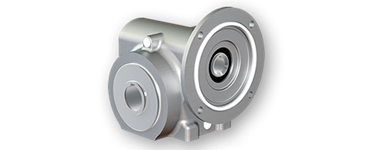Mobile:+86-311-808-126-83
Email:info@ydcastings.com
Exploring Different Types of Molds Used in Casting Processes
Types of Molds in Casting An Overview
Casting is a fundamental manufacturing process that involves pouring liquid material into a mold to create an object of desired shape after solidification. The mold plays a crucial role in determining the quality and precision of the final product. Several types of molds are utilized in casting processes, each suitable for different materials, applications, and production volumes. This article explores the various types of molds used in casting, highlighting their characteristics, advantages, and typical applications.
1. Sand Molds
Sand molds are one of the most traditional and commonly used types of molds in casting. They are made from a mixture of sand, clay, and water, which allows for easy shaping and reusability. The primary advantage of sand molds is their ability to accommodate a variety of metal types, including iron, aluminum, and bronze. Additionally, sand molds can be produced quickly, making them ideal for both small-scale and large-scale production.
These molds are generally used in iron and steel casting industries, as they can withstand high temperatures. However, they do have limitations, such as lower dimensional accuracy and surface finish compared to other mold types.
2. Investment Molds
Investment casting, also known as precision casting or lost-wax casting, involves creating a mold by covering a wax pattern with a ceramic shell. Once the shell hardens, the wax is melted away, leaving a detailed mold cavity. This method allows for high precision and complex geometries, making it particularly suitable for intricate parts in the aerospace, automotive, and medical industries.
Investment molds yield excellent surface finishes, reducing the need for extensive machining post-casting. However, the production process is more time-consuming and costly compared to sand molds, which may limit its use to high-value components.
3. Die Molds
Die casting utilizes metal molds, or dies, which are typically made of steel or aluminum. This method is particularly popular for high-volume production runs due to its rapid processing capabilities. Liquid metal is injected into the die under high pressure, resulting in high dimensional accuracy and excellent surface finish.
types of molds in casting

Die casting is commonly employed for non-ferrous metals such as zinc, aluminum, and magnesium. Although it provides speed and precision, the initial cost of creating the die can be significant, making it less economical for low-volume production.
4. Permanent Molds
Permanent molds are typically made of metal and are designed for reuse, which makes them cost-effective for high-volume applications. The process involves pouring molten metal into a pre-heated mold, allowing for high precision and good surface quality. This technique is often used for casting aluminum and other non-ferrous metals.
While permanent molds offer better dimensional control than sand molds, they are limited in terms of complexity; the designs must accommodate the ejection of the cast part without damaging either the part or the mold.
5. Shell Molds
Shell molding is an advanced casting method that uses a thin layer of resin-bonded sand to create a mold. This process allows for good dimensional accuracy and a smoother surface finish compared to traditional sand molds. Shell molds are typically used for gray iron and aluminum casting and are well-suited for medium to high production volumes.
The primary advantage of shell molds is their ability to produce intricate shapes with fine details, making them suitable for various industrial applications, including automotive parts and machinery components.
Conclusion
In summary, the choice of mold in casting significantly impacts the quality, precision, and cost-effectiveness of the final product. Each type of mold has unique characteristics and is suited for different applications. Understanding the various types of molds—sand molds, investment molds, die molds, permanent molds, and shell molds—allows manufacturers to select the most appropriate method for their specific needs, ensuring efficient production and high-quality outcomes.
-
Understanding Metal Casting TechniquesNewsApr.02,2025
-
Understanding Exhaust Manifolds for Enhanced Engine PerformanceNewsApr.02,2025
-
The World of Metal FabricationNewsApr.02,2025
-
Key Components for Pump and Turbo EfficiencyNewsApr.02,2025
-
Essential Tools for Automotive Maintenance and RepairNewsApr.02,2025
-
Durable Valve Components for Effective Water ManagementNewsApr.02,2025











